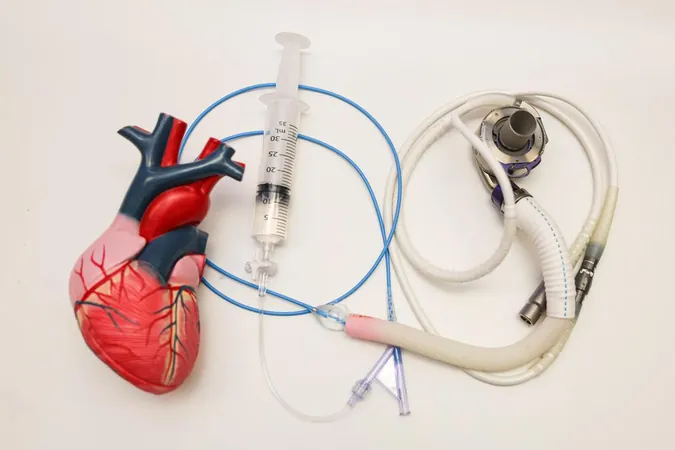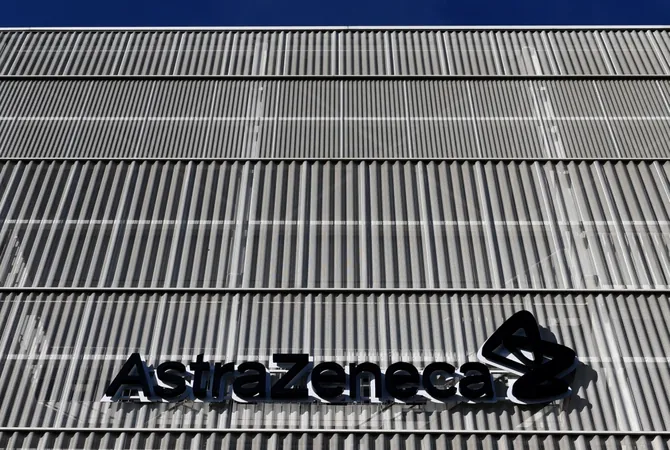
Revolutionary Minimally Invasive Procedure Rescues Heart Pump Patients in Singapore!
2025-03-27
Author: Arjun
Groundbreaking Medical Advancement
In a groundbreaking medical advancement, a novel minimally invasive procedure is transforming the lives of patients with mechanical heart pumps in Singapore. This innovative technique recently saved 42-year-old logistics supervisor Rizal Mohamed Ismail from facing the daunting prospect of another open-heart surgery due to frequent alerts about potential blockages in his device.
Patient's Journey
Rizal received his left ventricular assist device (LVAD) implant on March 10, 2022, after an intense surgery lasting between eight to twelve hours. Following the procedure, he spent nearly a month in recovery, but when his LVAD began to show signs of blockage, he feared a return to the operating room. Thankfully, his medical team at the National Heart Centre Singapore (NHCS) introduced him to a state-of-the-art treatment that drastically reduced his recovery time—he was discharged merely four days after the new procedure conducted in September 2024.
Significant Breakthrough in Cardiac Care
This revolutionary treatment was publicly showcased on March 27, marking a significant step in cardiac care. The LVAD plays a crucial role in supporting patients with severe heart failure by pumping oxygen-rich blood into the aorta, essential for bodily function. However, bio-debris buildup can obstruct the device’s dual-layered outflow graft, risking its efficacy.
Historical Context and New Approach
Historically, resolving such blockages required significant surgical interventions, necessitating lengthy recovery times up to ten days. The new approach, on the other hand, involves a minimally invasive technique performed within approximately two hours. This procedure utilizes a small incision in the leg, where a specialist team—including transplant surgeons and interventional radiologists—guides a balloon through the femoral artery to the graft site. Once inflated, the balloon dislodges debris, enhancing blood flow, after which a metal stent is placed to keep the graft open.
Expert Insights
Assistant Professor Zameer Abdul Aziz, who led Rizal's surgery, emphasized the importance of minimizing repeat surgeries for patients, reserving open-heart procedures for heart transplants if necessary. Following Rizal's successful treatment, a third patient has already benefited from the procedure, which is now available to all LVAD patients at NHCS.
A Monumental Breakthrough
Associate Professor Jonathan Yap, a senior consultant at NHCS, highlighted that while balloon and stent techniques are well-established for treating arterial blockages, their application in mechanical heart pumps represents a monumental breakthrough in cardiac care. Despite the procedure being introduced globally over the past two years, its adoption is still in its early stages, showing great promise for countless patients.
The Growing Need for Alternatives
The prevalence of end-stage heart failure continues to climb in Singapore, with the waitlist for heart transplants becoming increasingly lengthy. Some patients have been waiting for up to nine years, adding to the urgency for effective treatment alternatives like the newly adopted procedure. NHCS has already performed 152 LVAD implants, with over a third of recipients still relying on this life-saving support.
Rizal's Personal Story
For Rizal, the LVAD has been nothing short of life-changing, forcing him to adapt by giving up his beloved hobby of swimming and taking on desk-bound jobs. Nevertheless, he views his situation with gratitude, describing it as having a "second life" thanks to the advancements in technology. Rizal's resilience is further fueled by the love for his three children, cementing his determination to stay positive and fight for his health.
A Brighter Future for Heart Patients
As Singapore's healthcare landscape advances, the integration of innovative, less invasive treatments not only alleviates the physical challenges faced by heart patients but also paves the way for a brighter, healthier future. ⚡️ Will this breakthrough evolution mark the end of traditional open-heart surgeries in the treatment of heart failures? Stay tuned!


 Brasil (PT)
Brasil (PT)
 Canada (EN)
Canada (EN)
 Chile (ES)
Chile (ES)
 Česko (CS)
Česko (CS)
 대한민국 (KO)
대한민국 (KO)
 España (ES)
España (ES)
 France (FR)
France (FR)
 Hong Kong (EN)
Hong Kong (EN)
 Italia (IT)
Italia (IT)
 日本 (JA)
日本 (JA)
 Magyarország (HU)
Magyarország (HU)
 Norge (NO)
Norge (NO)
 Polska (PL)
Polska (PL)
 Schweiz (DE)
Schweiz (DE)
 Singapore (EN)
Singapore (EN)
 Sverige (SV)
Sverige (SV)
 Suomi (FI)
Suomi (FI)
 Türkiye (TR)
Türkiye (TR)
 الإمارات العربية المتحدة (AR)
الإمارات العربية المتحدة (AR)